Dehydrating Asparagus – Easy, Space Saving Asparagus Storage
This post may contain affiliate links. Read my full disclosure here.
If storage space is tight, dehydrating asparagus may be your best storage option. One quart of fresh asparagus will dehydrate to less than one cup. Dried asparagus is shelf stable, so it doesn’t take up space in the freezer or refrigerator. We’ll share how to dehydrate asparagus in a dehydrator or oven, plus tips for storing and using your dried veggies.
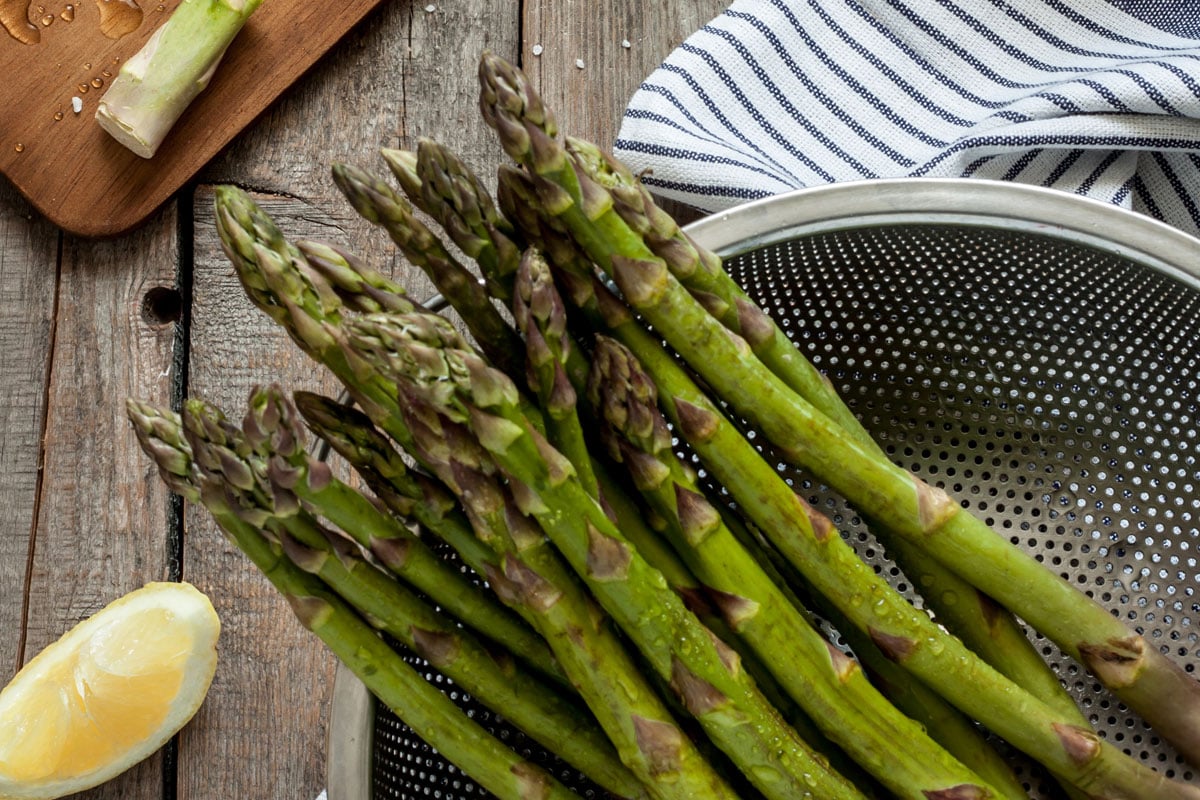
Dehydrating Asparagus – Step By Step
Choose young, tender asparagus spears. Look for tight asparagus tips and a firm texture. Wash the spears well and trim the bottoms, if needed. See “How to Cut Asparagus” for detailed trimming instructions.
Slice the spears into one to two inch pieces. If you have really fat asparagus stalks, cut them in half lengthwise, too. Fat pieces take much longer to dry, plus you run the risk that they won’t dry completely.
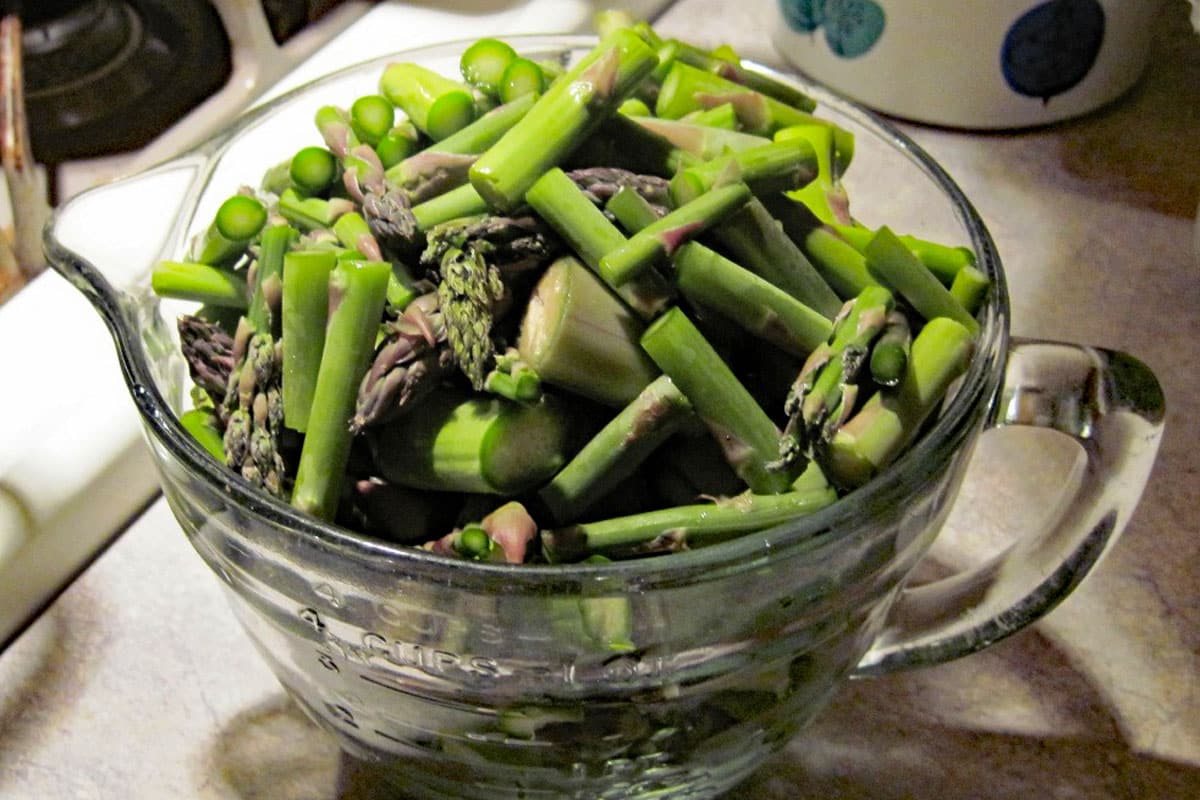
Before drying the asparagus, it’s best to blanch it. Blanching breaks down the enzymes that cause loss of flavor, color and texture.
To blanch, bring a pot of water to a rolling boil. Prepare a large bowl of cold water with ice in it for an ice bath. Place the asparagus pieces in the boiling water for two minutes, until they are bright green.
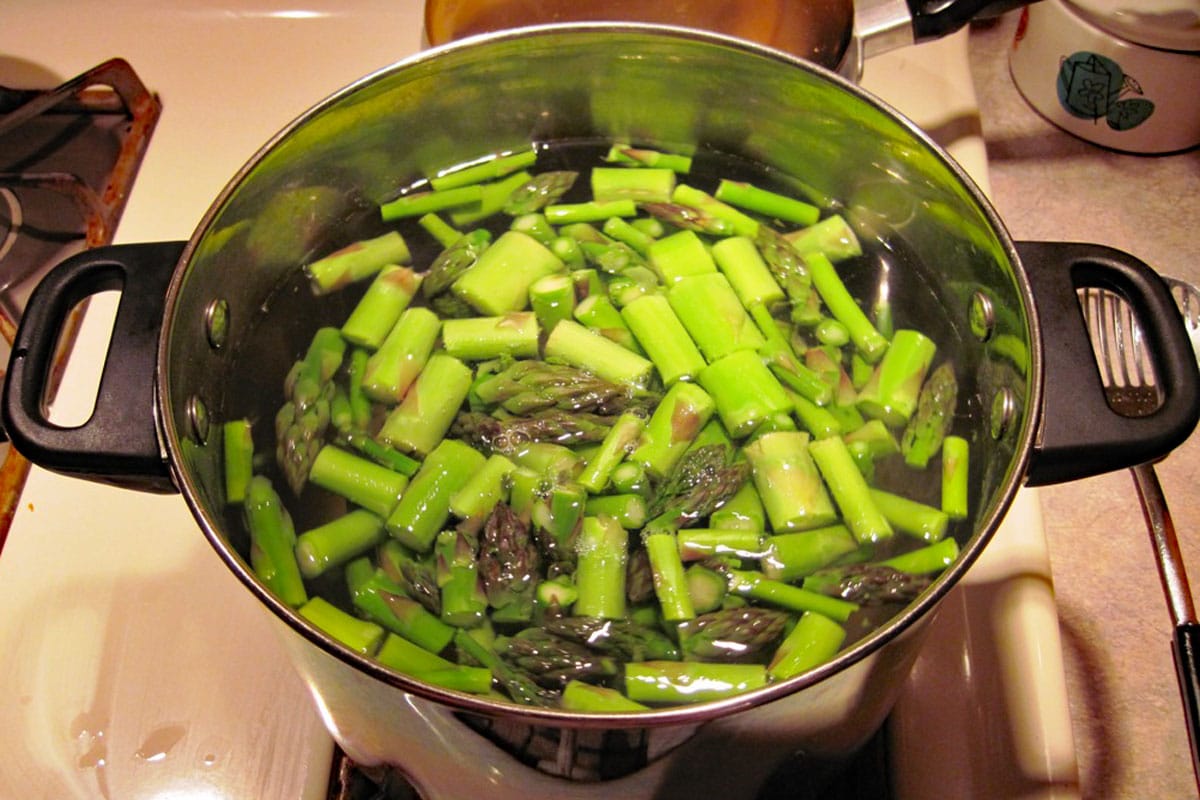
Remove them with a slotted spoon and transfer them to the ice water to stop the cooking process. Chill in a cold water bath until they cool completely.

Drain well and pat dry. Spread the pieces in single layers on dehydrator trays. Dry at 125°F (52°C) until leathery and brittle.
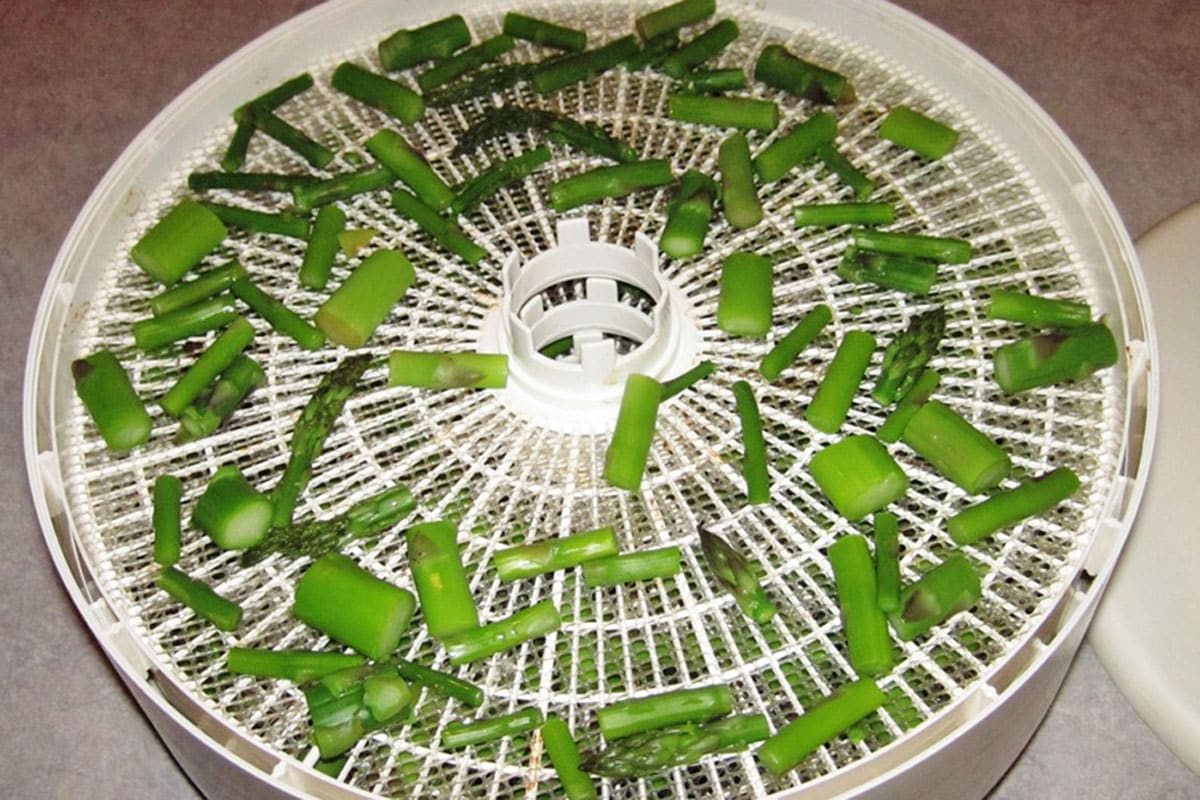
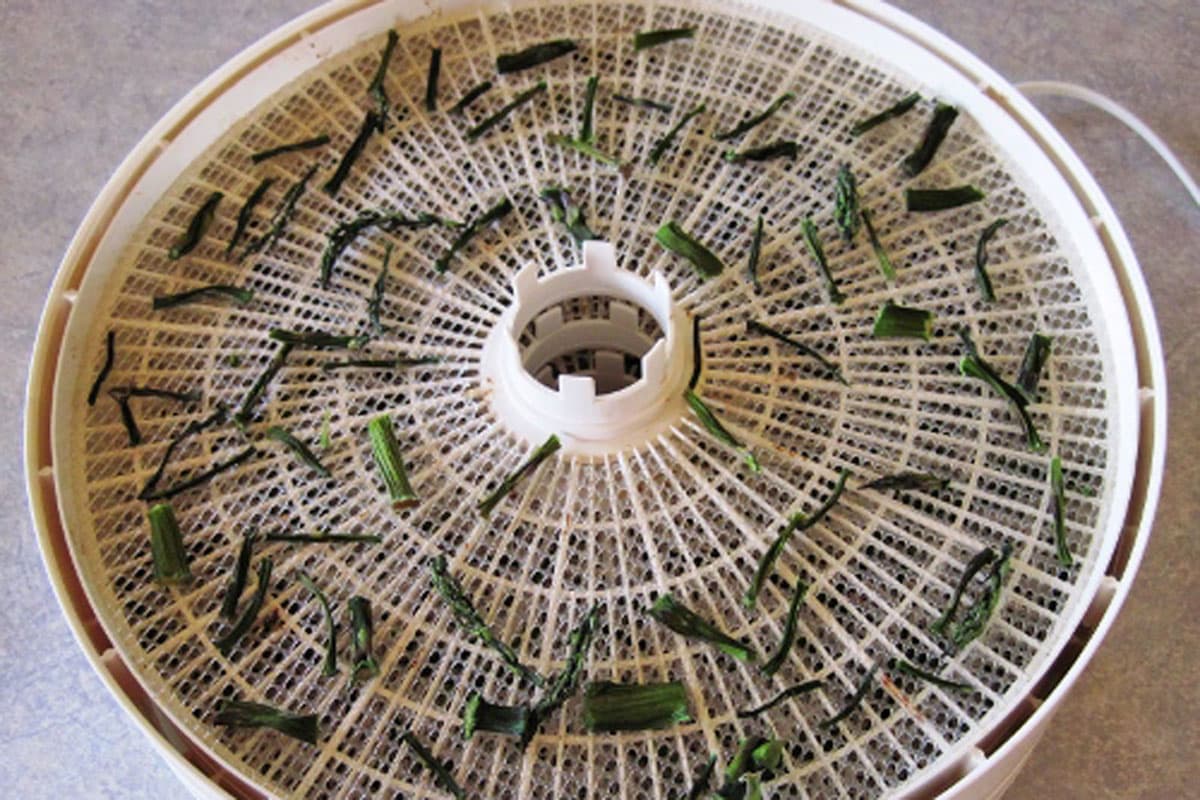
Drying time will vary depending on humidity levels and size of asparagus pieces. I usually load before bedtime and dry overnight. You want them to be dry enough that they snap easily in half for optimum shelf life.

Storage
Seal in an airtight container, such as a mason jar. Label and store in a cool, dark location for best shelf life. If you want to boost shelf life even more, use the Foodsealer jar sealer attachment to vacuum seal the jar.
Dehydrated asparagus should last for two to three years in a tightly sealed container.
Don’t leave your dehydrated veggies sitting out, especially if it is humid. They will absorb moisture from the air and get soft.
To save even more storage space, use a high powered blender to turn your dehydrated asparagus into a green powder. Add the powder into soups, stews, and casseroles for extra nutrition.
Oven Drying
Oven Drying is not recommended for households with small children due to safety concerns.
Would you like to save this?
To dehydrate asparagus in an oven, blanch the asparagus pieces and spread them in single layers on a baking sheets. Set your oven temperature as low as possible, and prop the door open 2-6 inches. Place a fan near the oven door to improve air circulation.
Space oven racks 2-3 inches apart. Place the baking sheets with asparagus in the warm oven. Stir the dehydrating asparagus every half hour, and rotate the sheets if using more than one.
Check dryness each time you stir. They should dehydrate in 2-3 hours.
Dehydrating in an oven will use more energy than a commercial dehydrator. Be careful to avoid cooking the veggies instead of drying them.
Rehydrating Dried Asparagus
The simplest options is to add the dried asparagus slices directly into soups or stews and let them rehydrate during cooking.
To rehydrate dried asparagus before cooking, place the dried asparagus pieces in a container large enough to accommodate them. Cover the asparagus with enough warm water to submerge them completely.
Allow the dried asparagus to soak in the warm water for about 30 minutes to 1 hour. This time frame should be sufficient to rehydrate them fully.
After soaking, check the texture of the asparagus. They should have become plump and tender. If they still feel somewhat tough or dry, you can continue soaking them for a bit longer until they reach the desired consistency.
Once the dried asparagus are rehydrated to your liking, add to soups, stews, and casseroles. The texture will be a little different than fresh.
If you have rehydrated more asparagus than you need for your current recipe, you can store the leftovers in an airtight container in the refrigerator for a few days. Just make sure to use them within a reasonable time frame to maintain their freshness.
See Home Food Drying for more information on dehydrating.
More Ways to Use and Store Asparagus
I like to store our fresh produce in a variety of ways. Using different storage methods provides different flavors and textures.
How to Store Asparagus in the Refrigerator
Spicy Pickled Asparagus (Lacto-Fermented)
Roasted Asparagus with Parmesan

This article is written by Laurie Neverman. Laurie grew up in the kitchen, learning baking and home cooking from her momma. At age 15, she and her mom and two sisters created Irene’s Custom Cakes & Catering, which was her summer job through most of high school and college.

